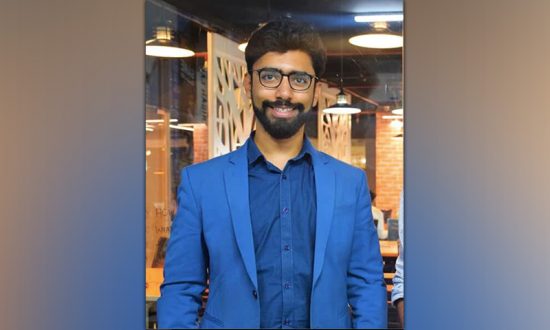Aneesh Bangia graduated from IIT Madras in 2010. Soon after graduating, he joined Ashok Leyland. Aneesh started teaching Physics to his fellow colleagues at the company. It is here, where he realized that his passion was teaching. Aneesh with an aim to explore teaching further took the decision of quitting his well-paying job and continued with his passion for teaching. Aneesh along with Abhishek Kariwal co-founded Open Door in 2013.
Let me share a story
A teacher enters a classroom with 30 children. She is excited about a new lesson that she is going to teach today. She explains the topic very well, gives many examples and even repeats herself whenever she thinks children are not following.
When the teacher looks at the children, she finds that the children are attentive and nodding their heads. At the end of the class, the children rise up and say: ‘Thank you, ma’am.’ She smiles and leaves the class.
What could possibly be wrong with this, you ask? This:
Each child in the class has a brain capable of thinking. Children have the ability to think of a few examples on their own. Children could have derived a few equations on their own. But, the teacher was too busy teaching.
This happened many years ago. These children have grown up to become me and you. Why are we allowing the same mistake to happen even today?
What should the teachers do?
‘I cannot teach anybody anything. I can only make them think.’ – Socrates.
Teachers should give a long hard thought about this quote.
Instead of finding the best tool to ‘explain’ the concept to children, teachers should ask: how can I make children think on their own?
And, what better tool to make children think than asking them questions? Questions compel children to think. If the question is a good question, then questions can also make children more interested in the subject.
Design a learning experience with questioning as a focus
Imagine a classroom in which teaching begins with such questions: ‘How would the world be if water was colourful?’ or ‘Will an alarm clock work on the Moon?’
As children begin to think, the teacher does not interrupt the thought process of the children. When some children raise their hands, she asks them to ‘Think again!’.
She sits back and watches the amazing sight of her children enjoying thinking. There is pin-drop silence in the classroom because children are engrossed in thinking.
When all the children are done thinking, she reveals the answer. She goes on to teach and she asks many interesting questions while she teaches. She has replaced 50% of her lecturing with questioning.
Sounds like an amazing classroom. No?
In such a classroom, children are the hero of learning. Teacher is merely a guide. Teachers should strive to provide such a learning experience to the students.
Think long term. Prepare children for the exams of the real world
The future is uncertain. No one knows what children will choose to do or learn in the future.
And, teachers cannot keep teaching the kids all their life. Children will grow up and enter the real world. The exam of life has to be cleared on their own. By teaching excessively, we are only becoming crutches for children. Let us teach children to walk on their own. The journey of learning has to be taken by oneself.
Teach less if you want children to learn more
Teachers need to understand this: Just like you can’t watch a movie and become a good actor, children can’t watch the teacher teach and become good at the subject.
Most teachers are so engrossed in ‘teaching’ that they forget to make sure that children are learning. Dear teachers – please take a pause and ask questions. You will be surprised to see the amazing answers that children can give. You will be surprised to see that much of what you teach can be figured out by children themselves.
The best teachers may know everything. But, they act like a student.
Teachers may know their subject very well. They may know all the answers. But, they need to recognise that children are capable of thinking.
The best teachers demonstrate the slow process of arriving at the answer to the students. They are so confident that they even make deliberate mistakes and let children correct them. They show themselves as a learner. The best teachers teach by not teaching. They ask questions and hold the answer until most children are done thinking.
Advantages of using questions as a learning tool
Teaching by asking questions can do a lot:
- When children put the effort into thinking, they remember for a much longer time. Questions lead to long-term understanding.
- Repeated questioning leads to repeated thinking. This develops a curiosity and creativity among children. It leads to children becoming lifelong learners.
- Questions make children humble. When they grow up, they are more likely to say ‘I don’t know’ and then want to learn. Good questions induce mistakes and show children’s ignorance to themselves. It leads to a humbling experience for young learners and thirst to learn more at the same time! And the start of the journey of learning!
That’s why, asking questions is a powerful teaching tool.




